Abstract Stones, Understanding and Appreciating, Part I
Examining the role of abstract stones in China and Japan
By Thomas S. Elias; November, 2022
The appreciation of abstract stones is truly ancient. The use of large irregular-shaped rocks that do not resemble familiar forms such as mountains or human figures and are often pocketed with cavities and holes along with ridges and furrows is well known in early Chinese gardens. Smaller scale versions of these abstract stones were a feature of the scholar’s studio as well as reception areas and other interior spaces. Famous writers of the Tang and following Song dynasties immortalized these stones in poems and prose. During the Tang dynasty (618-917 CE), poet Bai Juyi composed
Records of Taihu Stones and A Pair of Stones. Shu Shi, a Song dynasty poet, penned
Notes on Strange Stones, among his many other works. Such unusually shaped stones gave rise to the first set of criteria used to evaluate viewing stones nearly 1,000 years ago. Mi Fu, a poet, known far and wide for bowing to a stone and addressing it as his elder brother— looked for abstract qualities such as
shou (thinness), lou
(channels),
tou (holes), and
zhou (wrinkles) in the stones he collected.
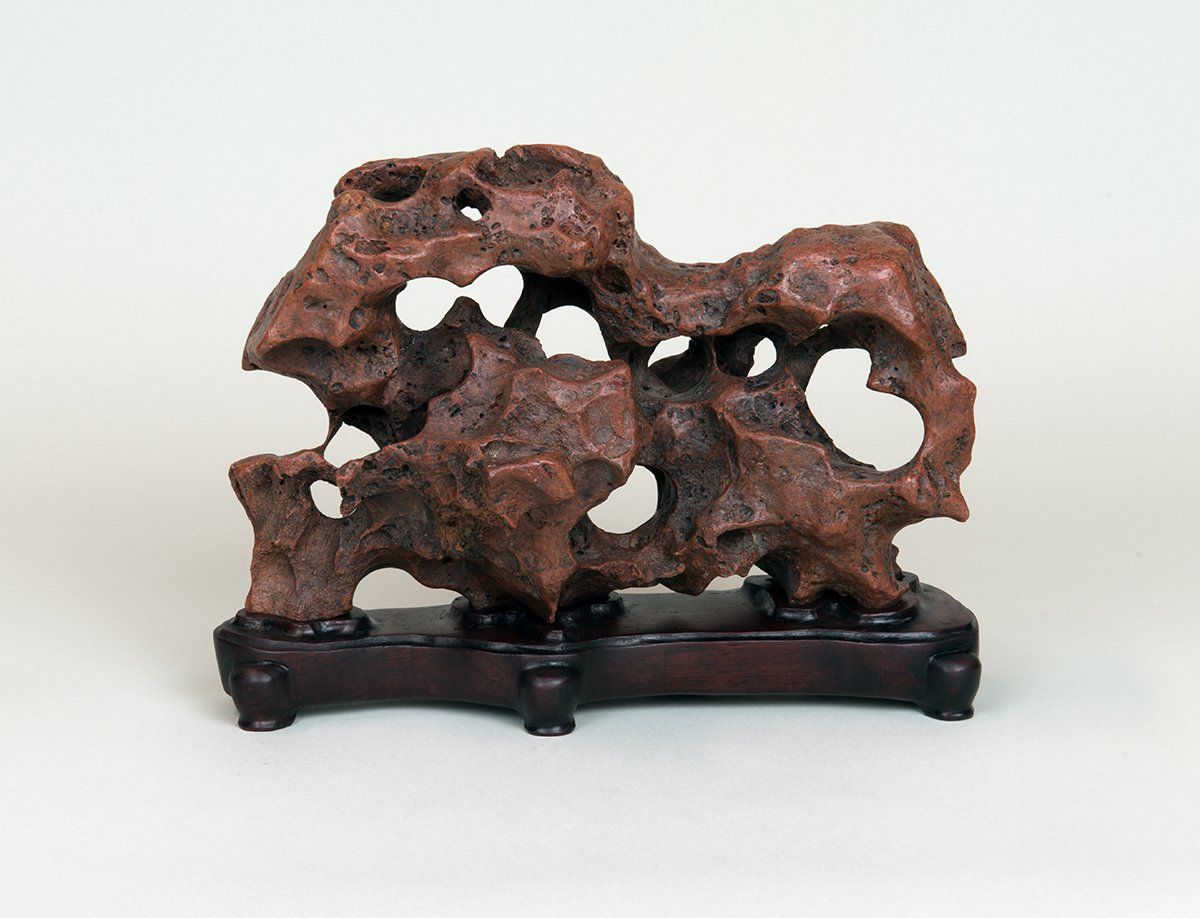
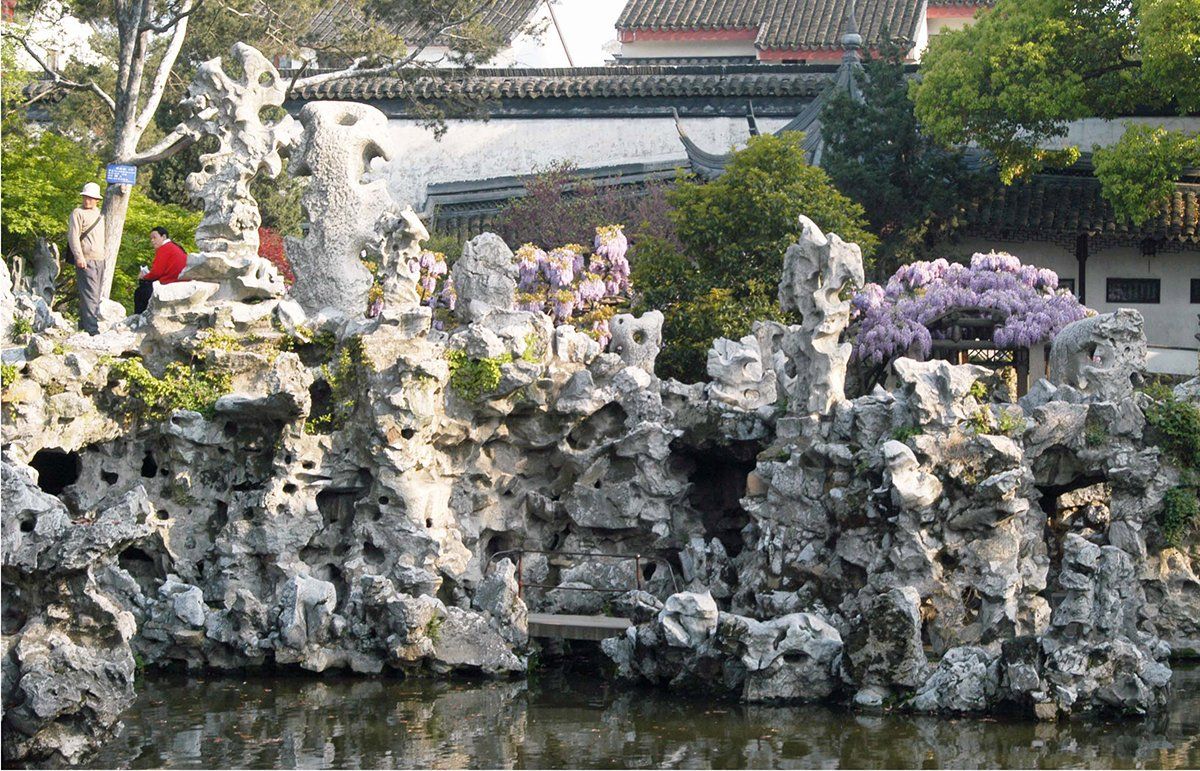
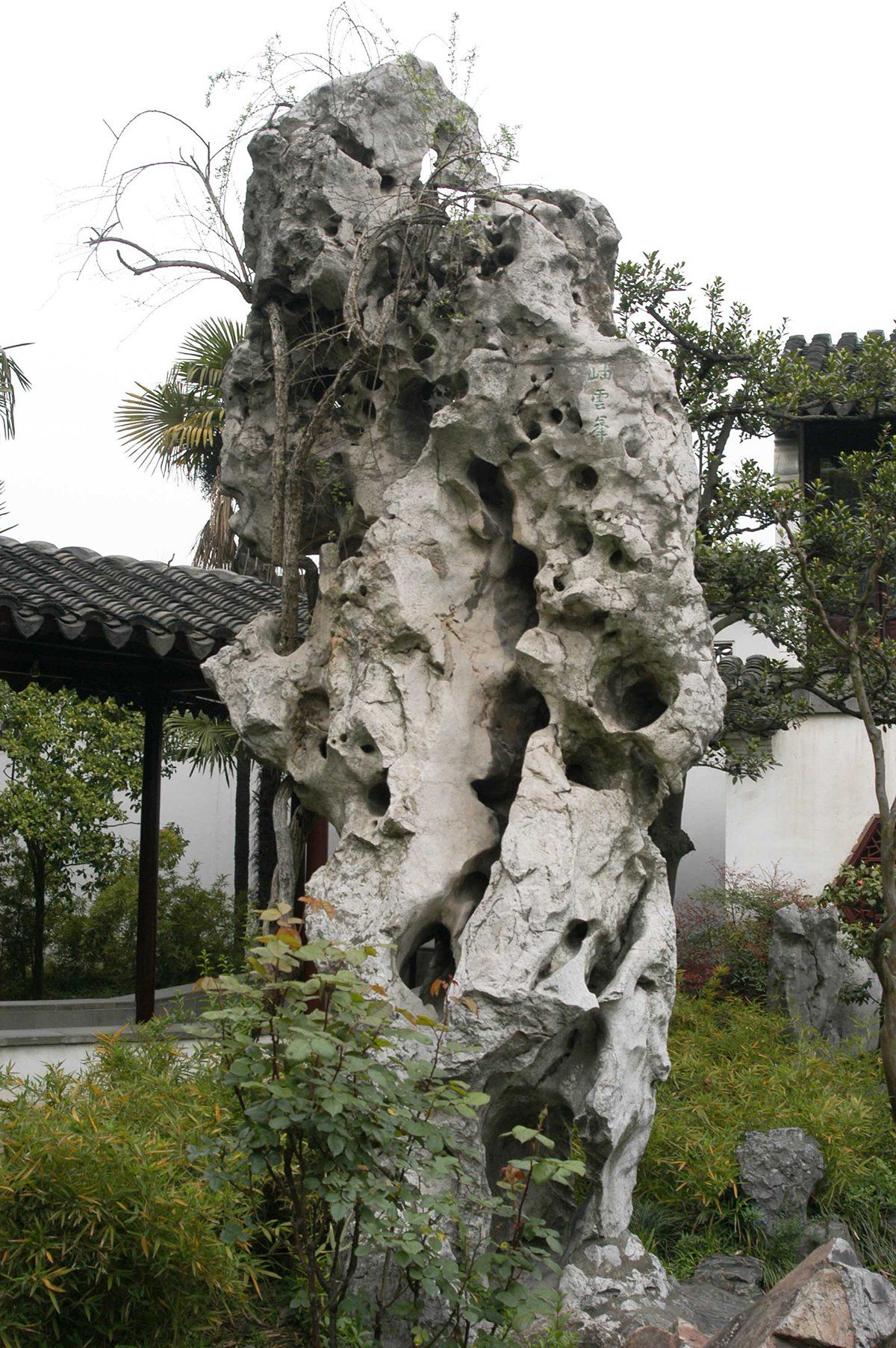
Smaller stones were displayed indoors, while larger ones were primarily displayed out of doors. This was a practical matter of scale. Small stones would be easily lost in an outdoor courtyard setting. Likewise, a huge taihu stone in an interior space would overpower all other elements.
While an individual outdoor viewing stone can be evaluated using MiFu’s criteria, it is also subject to evaluation as an integral part of a larger landscape scene than includes buildings, water features, and plants. They are not stand-alone entities like smaller desktop stones displayed indoors.
Chinese Lingbi stones for indoor display.
Is the use of abstract stones strictly a Chinese phenomenon? The role of abstract stones in Chinese stone appreciation is well documented. The place of abstract stones in Japanese susieki practices is much less clear.
Certain Japanese stones can be considered abstract stones. If they do not suggest a known object, I prefer to recognize them as abstract forms that can be appreciated on their own merits. They don’t need to be recognizable forms to instill feelings of beauty. Also, the degree of abstraction present in many stones makes it a subjective judgment. Both the Furuya stone and the Seigaku stone possess a mix of abstract and representational qualities.
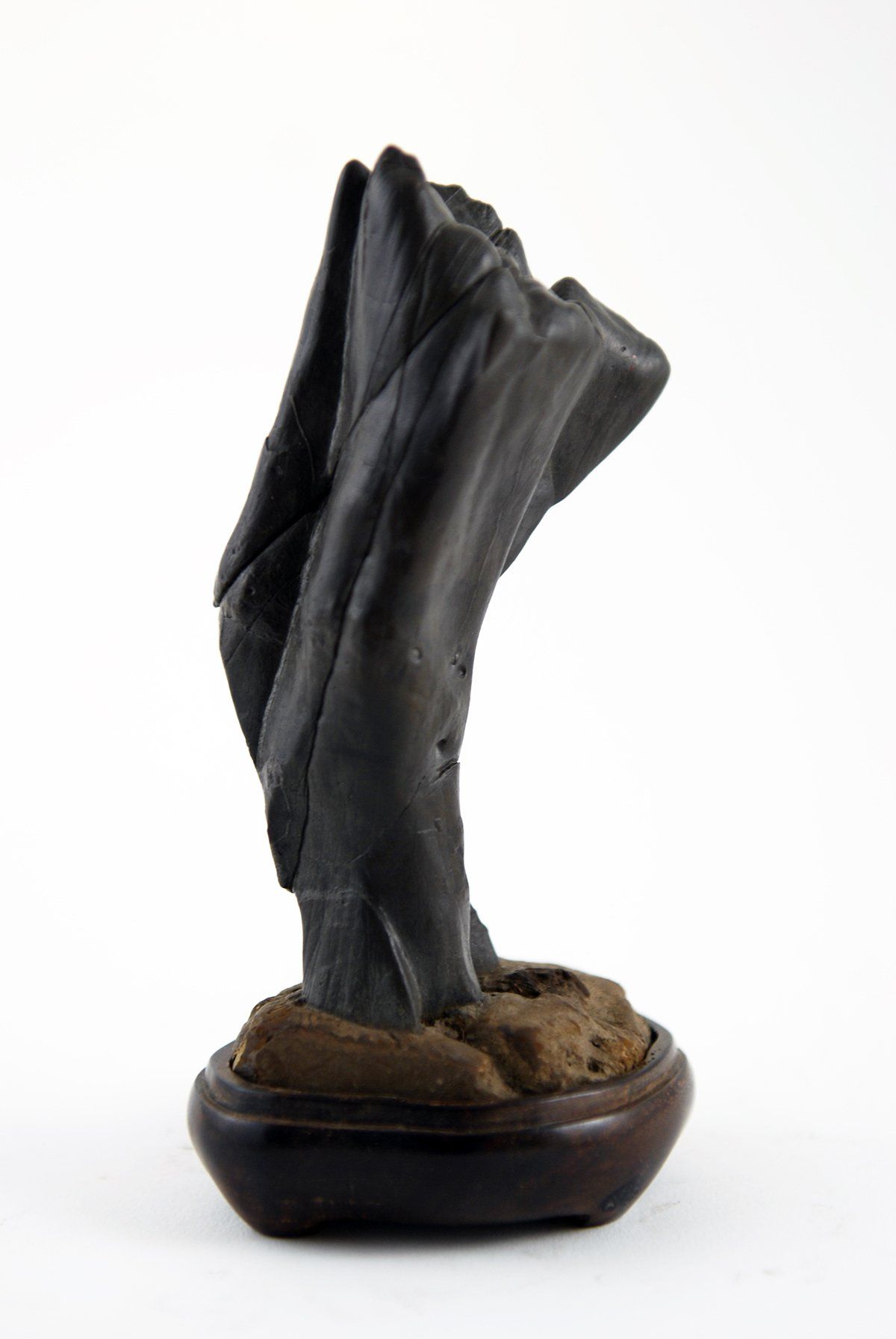
Morimae Seiji, a Japan Suiseki Association (JSA) board member, is widely recognized for his leadership and influence in Japan and abroad in matters relating to suiseki. He has given many presentations on aspects of suiseki and published many important papers on this subject. Morimae was the editor-in-chief of the first nine issues of the Japan Suiseki Exhibition catalogs. He described five categories of susieki in his informative article Bonsai and Suiseki, My humble view on the heart and aesthetic sense of bonsai and suiseki published in 2008. His five categories are Sansuiseki (landscape stones), Sugataishi (figure stones), Biseki (beautiful stones) and Monyoseki (patterned stones), and Chusho-yoseki (abstract stones). He notes that the Sansuiseki and Sugataishi are the most popular forms appreciated today in Japan. However, the occasional abstract Japanese stone can be seen in the annual Japan Suiseki Exhibitions.
Morimae further wrote that he finds himself more attracted to abstract and biseki forms as he ages. In writing these words, I think Morimae is freeing stone collectors to explore all forms found in naturally occurring rocks. Not all Suiseki have to be scenic landscape stones.
Morimae implies that abstract stones are to be enjoyed as one would enjoy an abstract painting or sculpture. This contrasts with viewing stones as reminders of beautiful scenery in the landscape or as familiar forms such as human figures, animals, or man-made objects such as huts or bridges.
Another factor contributing to a reduced interest in abstract stones in Japan may be the influence of Matsuura Arishige, former president of the Nippon Suiseki Association. Matsuura did not recognize abstract stones as a category of Suiseki in his An Introduction to Suiseki (2010). He did recognize unusual or rare stones as one of three subcategories of viewing stones, along with Biseki and Suiseki. Matsuura did not use the word abstract in his English language book when discussing the classification of Japanese Suiseki.
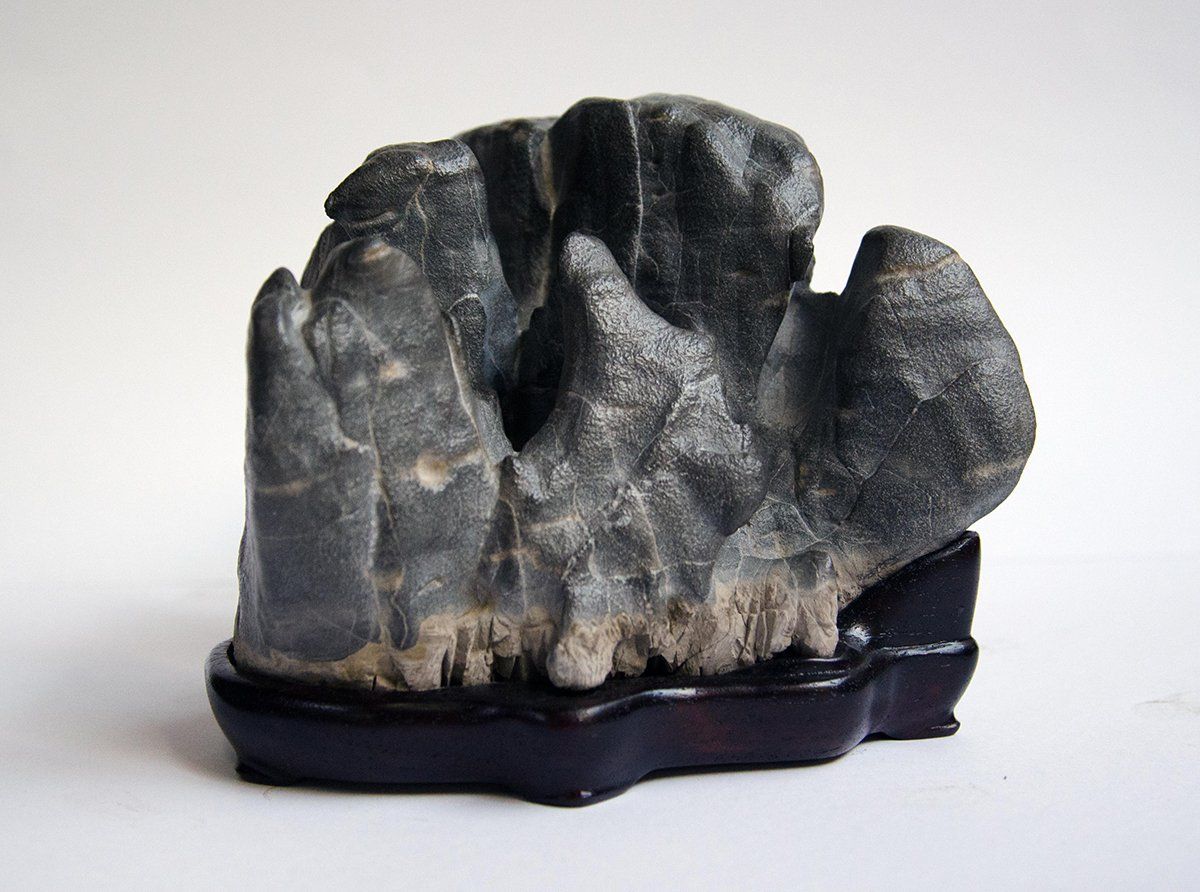
I like abstract rocks because they require me to think rather than being just a pleasant reminder of a mountain range, plateau, waterfall, or similar scenes. I hope collectors will follow Morimae’s lead and look at abstract stones more carefully. I think an in-depth dialogue about the role of these stones in viewing stone appreciation will be healthy for the global community that collects and studies aesthetically pleasing rocks.

